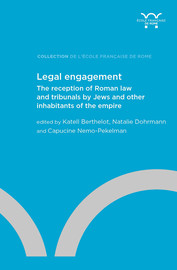Sacra Scripta 18/1 (2020)
Martin Meiser, "Die Selbstpräsentation des Paulus im Galaterbrief im Vergleich mit antiker rhetorischer und epistolographischer Praxis," 7-35
Recent rhetoric research on Paul no longer only discusses descriptive aspects, but also evaluative aspects. The present contribution compares Paul and Cicero with regard to their self-presentation in order to better understand the polemics of the Epistle to the Galatians and the ethos of the apostle, also in detail. For this purpose, it draws not only on some ancient textbooks of rhetoric, but also on speeches actually delivered by Cicero, which Cicero probably revised later.
Cha-Yong Ku, "'Siehe, der Mensch ist geworden wie unsereiner und weiß, was gut und böse ist': Gen 3,22 als Ironie?" 36-49
Dieser Aufsatz versucht, Gen 3,22a literarisch auszulegen und fragt dabei nach der versteckten Bedeutung, die der Autor in seine literarische Darstellung hineingelegt hat. Die Rede Gottes in Gen 3,22a scheint im umgebenden Text eher unverständlich zu sein. Denn die Aussage der Schlange, dass es möglich sei, durch die Erkenntnis von Gut und Böse gottgleich zu werden, wird als bloße Lüge nachgewiesen. Daraus lässt sich folgern, dass Gen 3,22a pure Ironie ist, die eine beißende Kritik Gottes an der Herausforderung durch den Menschen zum Ausdruck bringt.
Benjamin Lensink, "The 'Movement and Rest' in Gospel of Thomas 50," 50-69
The fiftieth logion of the Gospel of Thomas is an enigmatic triad of questions and answers told by Jesus to his disciples. The answer to the third question “What is the sign of your (pl) Father which is in you (pl)?” reads “it is movement and rest.” This phrase has no known parallels in similar literature and its meaning is unclear. The current article evaluates different explanations offered in recent scholarship before assessing the words “movement” and “rest” in the Gospel of Thomas as a whole. It then gives an overview of four possible contexts: Genesis, Jewish Hermeticism, Platonism, and Aristotelianism. The article concludes with claiming that a Platonist view makes most sense: Just as the Demiurge in Plato’s Timaeus placed the rotating soul – which moves while staying at rest – into the head of humankind, so the sign of the Father in his elect disciples is movement and rest.
Romeo Popa, "Ethik als Vermittlung zwischen Generationen in den Pastoralbriefen," 70-96
In the Pastoral Letters the problem of the relationship between age groups is most clearly expressed in early Christian literature. In the course of the reorganization of church structures resistance against younger leaders is attested (1Tim 4:12-15). New “false doctrines” further fuel the tension between generations because especially “young widows” (1Tim 5:11-15; 2Tim 3,6) show interest in such theological offers. Consequently, they are also given special attention in the paraenesis, whereby the paternalistic tendencies are radicalized. The theological confrontation with the opponents and the development of age-appropriate ethic discourses are illuminated on the background of the relations between generations.
Alexander Romualdus Dimas Pele Alu, "'Whom are You Seeking?' in the Fourth Gospel," 97-118
Of the four Gospels, the fourth Gospel uses the word “ζητέω” most often. The question “Whom are you seeking?” which is typical of the Evangelist, is addressed to various interlocutors: once to the two disciples of John the Baptist (Τί ζητεῖτε 1:38) and Mary Magdalene (τίνα ζητεῖς 20:15), and twice to the people who were going to arrest Jesus (Τίνα ζητεῖτε 18:4,7). The purpose of this research is to study a hypothesis: The seeking of Jesus by the two disciples in the call narrative (1:35-42) and Mary in the resurrection narrative (20:1-18) frame the failure of the Jews in the arrestation narrative (18:1-11).
